The difference between 9/11 and 10/7? The reaction to the horror
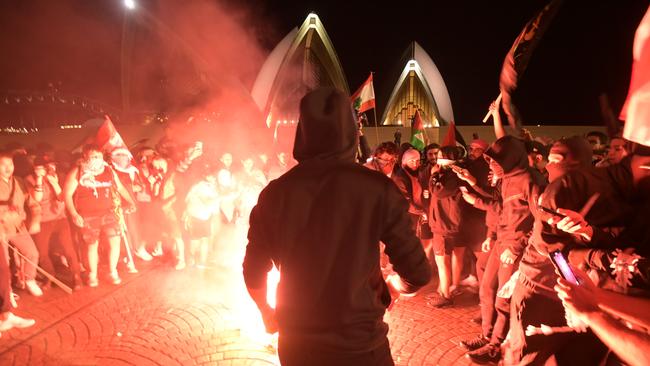
This was a genocidal pogrom. It was a scene out of the many places Jews had fled – a scene from the history of the Nazi Holocaust and of the European pogroms before that and of the Farhud, the 1941 massacre of Jews in Baghdad, a city that, it’s hard to believe now, was 40 per cent Jewish at the beginning of the twentieth century – all of which remind us of Israel’s necessity.
The Hamas terrorists came across the border into southern Israel on foot and on motorbike. They came by truck and by car and by paraglider. And they came with a plan. They came to Israel to murder and maim and mutilate anyone they could find. That is what they did.
These Cossacks had smartphones. They called their families to brag that they had murdered Jews. Dad, Dad, I killed 10 Jews! Others filmed the slaughter with GoPros. Some used the cellphones of their victims to upload the footage of their torture and murder to their Facebook pages.
In all of this, the terrorists are euphoric. No one who has watched the unedited footage fails to note the glee of the butchers.
Some Israelis were literally disappeared on October 7 – burned at such high heat that volunteers are still sifting through the bones and the remnant teeth to identify them.
But we know that more than 200 people are currently being held hostage by Hamas and that more than 1200 were murdered in those terrible hours.
Among the dead are some 30 American citizens. There are at least 10 Americans among the hostages.
All of which is why the immediate analogy the world reached for was to 9/11.
As with 9/11, the terrorists caught their victims by surprise on a clear blue morning.
As with 9/11, the spectacle and the savagery were the point.
As with 9/11, the terrorists notched points on their sadistic scoreboard, taking from us not just precious lives, but our sense of our safety and security. They changed something within us.
The difference between 9/11 and 10/7 – two massacres of innocent people, symbols to their killers of Western civilisation – was the reaction to the horror.
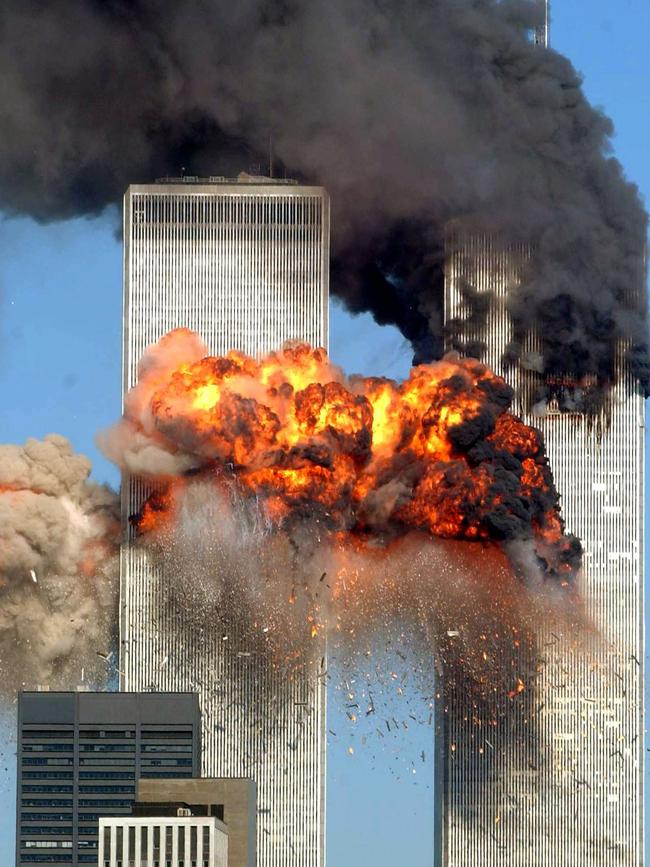
The difference between 9/11 and 10/7 was that the catastrophe of 10/7 was followed, on October 8, by a different kind of catastrophe. A moral and spiritual catastrophe that was on full display throughout the West before the bodies of those men and women and children had even been identified.
People poured into the streets of our capital cities to celebrate the slaughter.
In Sydney, crowds gathered at the Sydney Opera House cheering “gas the Jews.” People rejoiced on the streets of Berlin and London and Toronto and New York.
Then came BLM Chicago using the paraglider – a symbol of mass death – as a symbol of freedom. Then came posters across our campuses calling for Israel to burn. Then came our own offices in New York City being vandalised with “F..k Jews” and “F..k Israel.” Then came Harvard’s task force to create safe spaces for pro-Hamas students.
Then, as thunder follows lightning, more dead Jews. An anti-Israel protester in Los Angeles killed a 69-year-old Jewish man for the apparent sin of waving an Israeli flag, though NBC’s initial headline made it hard to know: “Man dies after hitting head during Israel and Palestinian rallies in California, officials say.”
In lock-step, the social justice crowd – the crowd who has tried to convince us that words are violence – insisted that actual violence was actually a necessity. That the rape was resistance. That it was liberation.
University presidents – who leapt to issue morally lucid condemnations of George Floyd’s killing or Putin’s war on Ukraine – offered silence or mealy-mouthed pabulum about how the situation is tragic and “complex” and how we need to think of “both sides” as if there is some kind of equivalence between innocent civilians and jihadists.
But the most alarming of all were the young people who threw their support not behind the innocent victims of Hamas terrorism, but behind Hamas.
At George Washington University, students projected the words “Glory to Our Martyrs” and “Free Palestine from the River to the Sea” in giant letters on campus buildings.
At Cooper Union in Manhattan, Jewish students had to hide in the library from a mob pounding on the door.
At Columbia, Professor Joseph Massad called the slaughter “awesome”. At Cornell, Professor Russell Rickford said it was “energising” and “exhilarating”.
At Harvard, more than 30 student groups signed a petition that found a way to blame Jewish victims for their own deaths – saying that they “hold the Israeli regime entirely responsible for all unfolding violence”.
At Princeton, hundreds of students chanted “globalise the intifada”, which can mean only one thing: open season on Jews worldwide.
At NYU, students held posters that read “keep the world clean” with drawings of Jewish stars in garbage cans.
Hip young people with pronouns in their bios are not just chanting the slogans of a genocidal death cult. They are tearing down the photographs of women and children who are currently being held hostage in the tunnels that run under the Gaza Strip. They do so with pleasure. They laugh. They mock the nine-month-old baby who was stolen from his parents.
In doing so, they are tearing down – or at least trying to tear down – the essence of our common humanity, or even the reality that hostages were taken at all. Or maybe it’s that they are trying to extinguish the memory of the hostages, who to them are not worth saving … or actually had it coming to them.
Or maybe – and I say this as the mother of a young child whose face I see in the face of every captive – they are trying to tear down the divine image that is at the root of our civilisation’s conception of the dignity of every human life.
What could possibly explain this?
The easy answer is that the human beings who were slaughtered on October 7 were Jews. And that anti-Semitism is the world’s oldest hatred. And that in every generation someone rises up to kill us. “They tried to wipe us out, they failed, let’s eat” as the old Jewish joke goes.
But that is not the whole answer. Because the proliferation of anti-Semitism, as always, is a symptom.
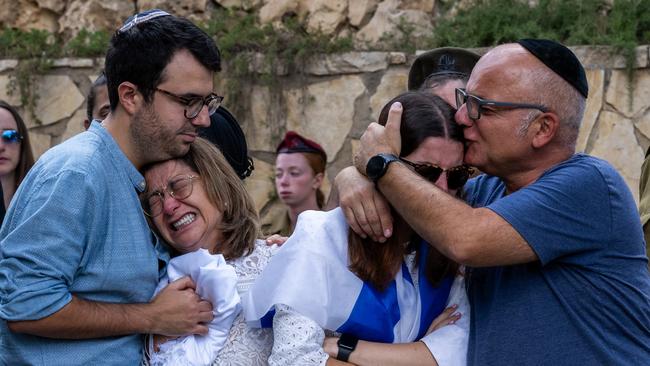
When anti-Semitism moves from the shameful fringe into the public square, it is not about Jews. It is never about Jews. It is about everyone else. It is about the surrounding society or the culture or the country. It is an early warning system – a sign that the society itself is breaking down. That it is dying.
It is a symptom of a much deeper crisis – one that explains how, in the span of a little over 20 years since Sept 11, educated people now respond to an act of savagery not with a defence of civilisation, but with a defence of barbarism.
It was 20 years ago when I began to encounter the ideology that drives the people who tear down the posters. It was 20 years ago, when I was a college student, that I started writing about a nameless, then-niche worldview that seemed to contradict everything I had been taught since I was a child.
At first, things like postmodernism and postcolonialism and postnationalism seemed like wordplay and intellectual games – little puzzles to see how you could “deconstruct” just about anything. What I came to see over time was that it wasn’t going to remain an academic sideshow. And that it sought nothing less than the deconstruction of our civilisation from within.
It seeks to up-end the very ideas of right and wrong.
It replaces basic ideas of good and evil with a new rubric: the powerless (good) and the powerful (bad). It replaced lots of things. Colour blindness with race obsession. Ideas with identity. Debate with denunciation. Persuasion with public shaming. The rule of law with the fury of the mob.
People were to be given authority in this new order not in recognition of their gifts, hard work, accomplishments, or contributions to society, but in inverse proportion to the disadvantages their group had suffered, as defined by radical ideologues.
And so, as an undergraduate, I watched in horror, sounding alarms as loudly as I could. I was told by most adults I knew that yes, it wasn’t great, but not to be so hysterical. Campuses were always hotbeds of radicalism, they said. This ideology, they promised, would surely dissipate as young people made their way in the world.
They were wrong. It did not.
Over the past two decades, I saw this inverted worldview swallow all of the crucial sense-making institutions of American life. It started with the universities. Then it moved beyond the quad to cultural institutions – including some I knew well, like The New York Times – as well as every major museum, philanthropy, and media company. It’s taken root at nearly every major corporation. It’s inside our high schools and our elementary schools.
And it’s come for the law itself. When you see federal judges shouted down at Stanford, you are seeing this ideology. When you see people screaming outside the homes of certain Supreme Court justices – causing them to need around-the-clock security – you are seeing its logic.
The takeover of American institutions by this ideology is so comprehensive that it’s now almost hard for many people to notice it – because it is everywhere.
Merit and excellence are dirty words
For Jews, there are obvious and glaring dangers in a worldview that measures fairness by equality of outcome rather than opportunity. If underrepresentation is the inevitable outcome of systemic bias, then overrepresentation – and Jews are 2 per cent of the American population – suggests not talent or hard work, but unearned privilege. This conspiratorial conclusion is not that far removed from the hateful portrait of a small group of Jews divvying up the ill-gotten spoils of an exploited world.
But it is not only Jews who suffer from the suggestion that merit and excellence are dirty words. It is every single one of us. It is strivers of every race, ethnicity, and class. That is why Asian American success, for example, is suspicious. The percentages are off. The scores are too high. The starting point, as poor immigrants, is too low. From whom did you steal all that success?
The weeks since October 7 have been a mark to market moment. In other words, we can see how deeply these ideas run. We see that they are not just metaphors.
Decolonisation isn’t just a turn of phrase or a new way to read novels. It is a sincerely held political view that serves as a predicate to violence.
If you want to understand how it could be that the editor of the Harvard Law Review could physically intimidate a Jewish student or how a public defender in Manhattan recently spent her evening tearing down posters of kidnapped children, it is because they believe it is just.
Their moral calculus is as crude as you can imagine: they see Israelis and Jews as powerful and successful and “colonisers”, so they are bad; Hamas is weak and coded as people of colour, so they are good. No, it doesn’t matter that most Israelis are “people of colour”.
That baby? He is a coloniser first and a baby second. That woman raped to death? Shame it had to come to that, but she is a white oppressor.
This is the ideology of vandalism in the true sense of the word – the Vandals sacked Rome. It is the ideology of nihilism. It knows nothing of how to build. It knows only how to tear down and to destroy.
And it has already torn down so very, very much. The civilisation that feels as natural to us as oxygen? That takes thousands of years, thousands of nudges of progress, thousands of risks, thousands of forgotten sacrifices to build up. But vandals can make quick work of all that.
Reagan used to say that freedom is never more than one generation from extinction. The same can be said of civilisation.
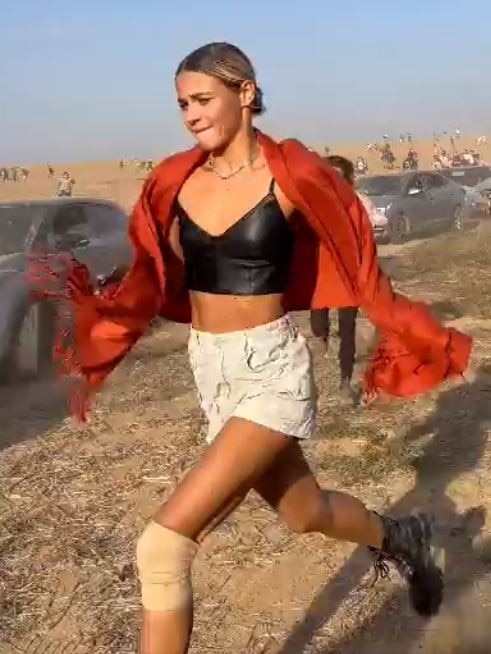
If there can be anything good that has come out of this nightmare it is this: we have been shaken awake. We know the gravity of the stakes. And they are not theoretical. They are real.
So what do we do?
First: look. We must recover our ability to look and to discern accordingly. We must look past the sloganeering and the propaganda and take a hard look at what’s in front of our eyes.
Look first at what just happened. At the barbarism that Hamas carried out.
Look at the reaction to it. Take stock of how profoundly the lies and the rot have travelled. How badly the forces of civilisation are faring in this battle. How it is the most educated, the most pedigreed who have become the most morally confused. The suspect in the killing of Paul Kessler is a college professor.
‘Look at your enemies and your allies’
To see the world as it is, we must prize the distinctions between good and bad. Better and worse. Pain and not pain. Safety and danger. Just and unjust. Friends and enemies.
I do not need “context” to know that tying children to their parents and burning them alive is pure evil, just as I do not need a history lesson on the Arab-Israeli conflict to know that the Arab Israelis who saved scores of Jewish Israelis that day are righteous.
Look at your enemies and your allies. Many of you have no doubt understood this longer than I have. But for many people, friends and enemies are likely not who they thought they were before October 7.
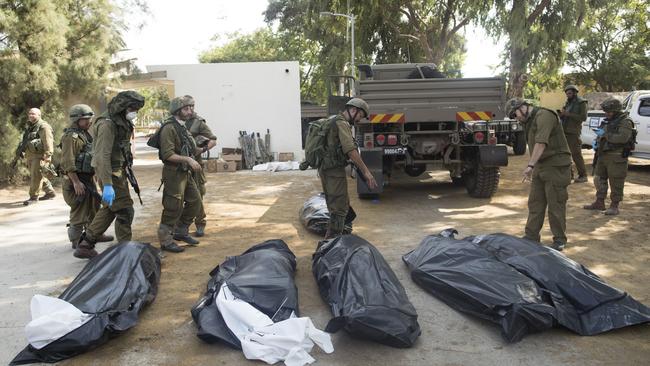
In recognising allies, I’ll be an example. I am a gay woman who is moderately pro-choice. I know there are some who do not believe my marriage should have been legal. And that’s okay, because we are all Americans who want lower taxes.
But seriously: I know that in the fight for the West, I know who my allies are. And my allies are not the people who, looking at facile, external markers of my identity, one might imagine them to be. My allies are people who believe that America is good. That the West is good. That human beings – not cultures – are created equal and that saying so is essential to knowing what we are fighting for. America and our values are worth fighting for – and that is the priority of the day.
The other thing to look for is the good. Look hard for the good and don’t lose sight of it.
New York coffee shop owner Aaron Dahan had all of his baristas quit when he placed an Israeli flag in the window and began fundraising for Magen David Adom – the Israeli Red Cross.
But his cafe didn’t close – quite the opposite. Suppliers sent him free shipments of beans and cups. Community members picked up shifts for free. There were lines around the block to buy a cup of coffee. The cafe made $25,000 in a single day. American cowboys from the Great Plains and the Rockies have travelled to Israel to tend to the fields and animals of Israeli farmers who were killed.
This is the opposite of the cheap solidarity of standing with Hamas that we see across our campuses and city centres. This is the essence of the West – of the idea that free societies must stand together.
It is not just, as I believe James Woolsey said, that we are all Jews now. The reverse is also true. Israel is a mirror for the West, and for the US – whose founders saw a version of themselves in the biblical nation that also inspired modern Zionists whose grieving descendants today are looking toward America with gratitude, but also with alarm, sensing a shared struggle ahead.
Second: we must enforce the law.
The wave of elected so-called “progressive prosecutors” has proven to be an immensely terrible thing for law and order in cities across America. It turns out that choosing not to enforce the law doesn’t reduce crime. It promotes it.
It is no coincidence that many of the same activists who have pushed to “defund the police” are also now publicly harassing Jews. Everyone needs equal protection, not only of the law but from the forces of chaos and violence. In Brooklyn, there have been an unconscionable number of violent attacks against Orthodox Jews over the past decade, correctly identified as hate crimes.
But they are also simply crimes that, if the law were upheld, would be far less likely to happen – whatever their motivation.
Masking at a protest is illegal in many states so that it does not become an attempt at mass-intimidation, a la the KKK.
Now maybe that’s a good idea – maybe it’s a bad one. But in nearby Virginia, it happens to be the law. And yet, as David Bernstein recently pointed out in Eugene Volokh’s blog, at George Mason University’s Fairfax campus nearly all the protesters at a recent Students for Justice in Palestine rally were masked and covered. Were they punished for breaking the law? I suspect if they had been we would have read about it.
The rallies would likely be less susceptible to erupting in violence if the attendants weren’t hiding their faces. So don’t allow selective enforcement of this law, or any others. If white supremacists can’t do it, then neither can antifa or Hamas sympathisers.
Third: no more double standards on speech.
Public universities are constitutionally forbidden from imposing content-based restrictions on free speech. And yet, that’s precisely what they’ve been doing.

Ask any conservative – and I now know a few – who’s tried to speak at a public university and had a “security fee” imposed on them or had their speeches quietly moved off campus and into small, restrictive venues whether there aren’t brazen content-based restrictions on their speech imposed by public universities.
Private universities can legally restrict speech. But their restrictions may not be enforced discriminatorily. And yet, they are.
Take Yale Law School. In 2021, law student Trent Colbert invited classmates to his “trap house,” in his announcement of a “constitution day bash” hosted by FedSoc and the Native American Law Students Association. It took 12 hours for administrators to process discrimination complaints, haul Colbert in for a meeting, and suggest his career was on the line if he didn’t sign an apology they penned on his behalf. The law school’s dean also authorised a message condemning Colbert’s language. Why? Because trap house was a term some claimed had racist associations with crack houses.
But when Jewish students wrote to that dean some two weeks after the Hamas attacks, detailing the anti-Semitic vitriol they have received, they got a formulaic reply from her deputy, directing them to student support services.
For certain students, kid gloves. For others, the maw of whatever hate their classmates and professors can think of. The universities play favourites based on the speech they prefer, and the racial group hierarchies they’ve established. It’s a nasty game and they need to be called to account for it.
Fourth, accept that you are the last line of defence and fight, fight, fight.
If you study history and if you look at where Jews stand, for better and usually for worse, you will understand where a culture, where a country, where a civilisation stands. Whether it’s on the way up or whether it’s on the way down. Whether it’s expanding its freedoms. Or whether it’s contracting them.
Where liberty thrives, Jews thrive. Where difference is celebrated, Jews are celebrated. Where freedom of thought and faith and speech are protected, Jews tend to be, too. And when such virtues are regarded as threats, Jews will be regarded as the same.
As goes Ohio, so goes the nation. The Jews – please don’t quote me on this – are Ohio.
But nothing is guaranteed. The right ideas don’t win on their own. They need a voice. They need prosecutors.
Time to defend our values – the values that have made this country the freest, most tolerant society in the history of the world – without hesitation or apology.
The leftist intellectual Sidney Hook, who broke with the Communists, and called his memoir Out of Step, used to implore those around him to “always answer an accusation or a charge” to not let falsehood stand unchallenged.
We have let far too much go unchallenged. Too many lies have spread in the face of inaction as a result of fear or politesse.
No more.
Do not bite your tongue. Do not tremble. Do not go along with little lies. Speak up. Break the wall of lies. Let nothing go unchallenged.
Our enemies’ failure is not assured and there is no cavalry coming. We are the cavalry. We are the last line of defence. Our civilisation depends on us.
Bari Weiss is an American journalist and editor, and founder of media company The Free Press. This is an edited version of the Federalist Society’s Barbara K. Olson Memorial Lecture she delivered earlier this month.







By the time Americans woke up on October 7, 2023, it was clear that what had unfolded while we slept was not like previous wars or battles Israel has fought in its 75-year history.